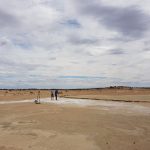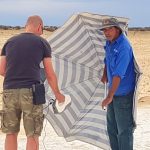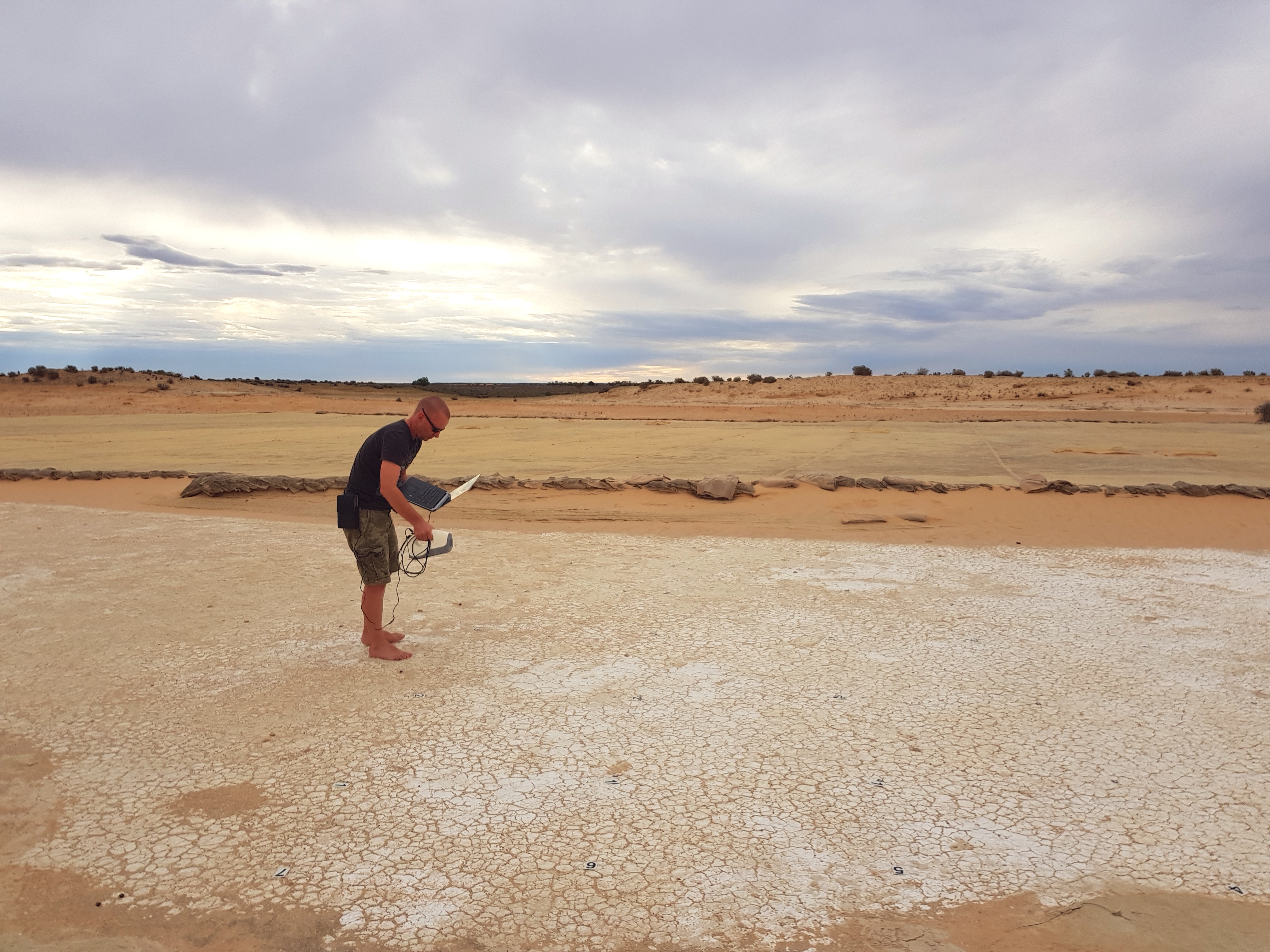AQueensland College of ArtPhD candidate is using cutting-edge 3D technology to preserve the country’s oldest human footprints.
Chris Little was invited to Mungo National Park as part of his research into heritage preservation.
The world heritage site contains Indigenous footprints known as the Willandra Trackways -the oldest footprints ever found in Australia and the largest set of ice age footprints in the world.
Heavy winds have exposed fresh footprints and Chris was invited to 3D scan the footprints to document and preserve the trackways.
“With 50,000 visitors a year, the footprints are at risk of damage and deterioration,” he said.
“Scanning is the perfect way to record and preserve the past.
“3D printing the trackway scan data will provide a tactile experience, giving a true sense of distance, depth and scale.”
Chris is also keen to use interactive augmented reality to bring the site to life.
“We want to combine the 3D scans with an interactive augmented reality experience that will bring the stories back to life,” he said.
“It will be an accurate and immersive visual experience – a group walking across the claypan or hunters throwing spears as they chase their prey.
“I’m really excited about the possibilities of harnessing AR and 3D technology – it will allow us to take a footprint in the sand, and use it to help people get a much deeper understanding of Indigenous culture and history.”
Chris worked on the project with a local Indigenous advisory group and elders, an experience he describes as “an eye opener”.
“It was very humbling to be invited onto this site, which is a sacred space,” he said.
 “I had the opportunity to work closely with the Indigenous rangers and representatives from the three tribal groups involved in the area.
“I had the opportunity to work closely with the Indigenous rangers and representatives from the three tribal groups involved in the area.
“All of these people were involved with the repatriation of Mungo Man, which was massive for them, a really significant turning point.
“A lot of people are very prepared to take things away from sites like this, but this project is giving back and helping share Indigenous culture using a new technology.
The remote site posed some unique challenges for Chris, who has 15 years experience in 3D scanning, and has worked on
everything from forensic crime scenes to preserving WWI relics.
“I have used 3D scanning in all kinds of crazy environments, but this was tough,” he said.
“We were really
battling the elements – from the harsh sunlight to the lack of electricity and the extremely remote areas we were working in.”
As well as completing a PhD, he works as a technical officer at the Queensland College of Art, helping students with 3D scan and print projects.
“I enjoy teaching the students and pushing the boundaries of scanning into new areas.
“It is great at Griffith that our students are being taught the proper workflows, and how to create these innovative, bespoke products using 3D scans and design.”
Earlier this year, he won Griffith’sRemarkable Minutesvideo competition for “Creating Windows Into our Past”.
